-
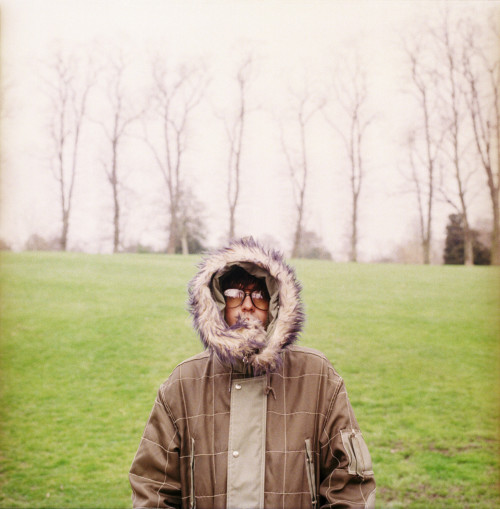 Select options This product has multiple variants. The options may be chosen on the product page / Details
Select options This product has multiple variants. The options may be chosen on the product page / DetailsHarry Borden: Jarvis Cocker, London (1998)
£ 625 – £ 5,800Jarvis Cocker photographed in Waterlow Park, London, March 1998 Harry Borden recalls the session with the Pulp frontman: "I took this photograph in March 1998. By that time Pulp had recorded two major hit albums: His ‘n’ Hers (1994) and Different Class (1995), which featured several iconic singles including ‘Common People’. By this stage Jarvis was a superstar, established as part of the cultural landscape and featured frequently in the newspapers. I was doing the shoot for the Observer and he was being interviewed by journalist Lynn Barber at her house in Highgate, London. Using my Hasselblad, I took some pictures around the house, including in her daughter’s bedroom. The original idea was to move on and shoot some pictures in Highgate Cemetery, but I felt it wasn’t really appropriate for him as he wouldn’t have fitted into that Gothic environment. Instead we went to nearby Waterlow Park and shot more images there. Towards the end of the shoot I asked him to zip up the hood of his snorkel parka coat, so only his big, reflective glasses were visible. I liked the idea of being confronted with someone famous and playing with the fact that it’s really them. I was concerned his face would be too dark, so I used a handheld exposure meter to take a reading of the light going into the hood. By exposing only for his face, the line of trees in the background was blown out because it was overexposed. The result was a graphic and intriguing picture. It is possible that I had David Bailey’s portrait of Mick Jagger in a fur hood in mind when taking this picture. Rather than just copy a famous image, I try to take an idea and use it as a basis to create something that is different and original. This way, rather than getting a pastiche, you get a genuine moment. The line of trees in my picture gives it a kind of municipal ordinariness that suits Jarvis’s style and takes it on to another level. " Available in a choice of physical size options. Please ask for framing options. Please allow 2-3 weeks between order and delivery for an unframed photograph. Framing adds 2-3 weeks. -
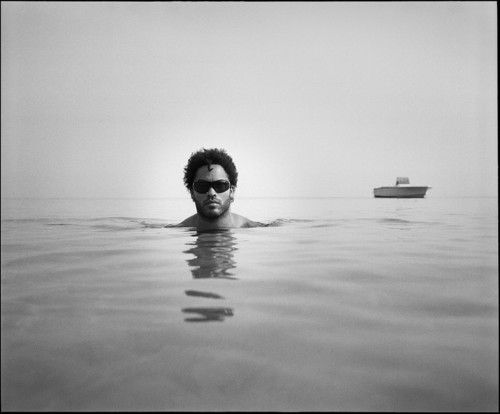 Select options This product has multiple variants. The options may be chosen on the product page / Details
Select options This product has multiple variants. The options may be chosen on the product page / DetailsHarry Borden: Lenny Kravitz, Bahamas (1998)
£ 625 – £ 5,800Lenny Kravitz photographed in The Bahamas, 1 July 1998 Harry Borden remembers the shoot with Lenny Kravitz on 1 July 1998: “This was taken in the Bahamas. I had first photographed Lenny seven years before for the NME. That occasion was his first UK interview and he and his manager came to my flat in Bethnal Green. We remembered the shoot and it was good to reconvene in such an exotic location. He was making a video so there was a lot of hanging around. We stayed at the Compass Point Beach resort, and our bedrooms were on stilts next to the beach. It was basically a holiday punctuated by the shoot. Although reluctant to be shot without his sunglasses, he was beautiful, cool and very easy to photograph. Eventually I got him in the sea and after taking the obligatory statuesque images of his perfectly proportioned body, I shot this picture. The boat on the horizon and him lower in the water, the image had narrative and a sense of mystery. I shot this on a Fuji 6x7 Rangefinder on Tri-X Film. Sometimes less is more.” Available in a choice of physical size options. Please ask for framing options. Please allow 2-3 weeks between order and delivery for an unframed photograph. Framing adds 2-3 weeks. -
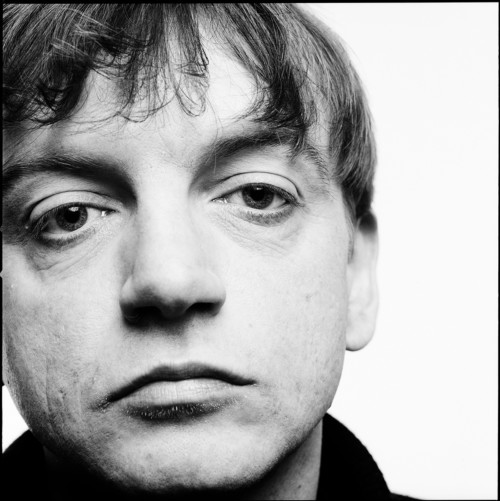 Select options This product has multiple variants. The options may be chosen on the product page / Details
Select options This product has multiple variants. The options may be chosen on the product page / DetailsHarry Borden: Mark E Smith
£ 625 – £ 5,800Mark E Smith photographed in his room at the Pembridge Court Hotel, Notting Hill, London on 8 March 1993 Harry recalls the shoot: “Confrontational and curmudgeonly, Mark E Smith could be intimidating presence. It was a skill to get him to put down his cigarette and pint of lager and look at the camera. He was staying at the Pembridge Court Hotel in Notting Hill and I set up a little studio in his room.I did three shoots with him over the years and always enjoyed is abrasive mischievous humour." Available in a choice of physical size options. Please ask for framing options. Please allow 2-3 weeks between order and delivery for an unframed photograph. Framing adds 2-3 weeks. -
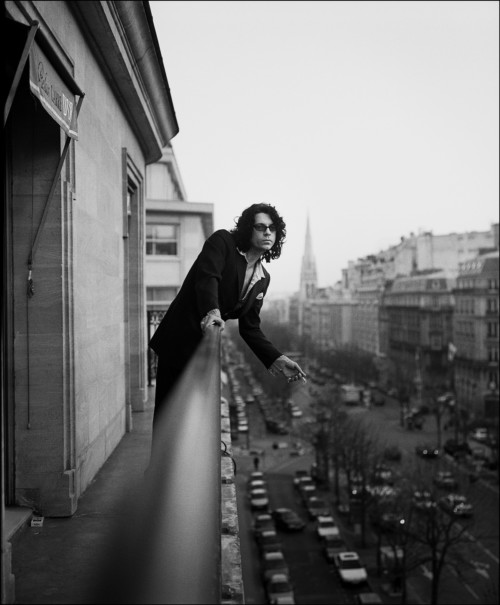 Select options This product has multiple variants. The options may be chosen on the product page / Details
Select options This product has multiple variants. The options may be chosen on the product page / DetailsHarry Borden: Michael Hutchence, Paris (1997)
£ 625 – £ 5,800Michael Hutchence pauses for a cigarette on the balcony of his hotel on the Champs Élysées, Paris, March 1997 This portrait of Michael Hutchence has become one of Harry Borden's best known images. Harry recalls a memorable week spent with the tragically short-lived INXS singer: "In March 1997, I was asked by The Observer to photograph him in Paris, where he was promoting INXS’s latest single, "Elegantly Wasted". It was a great commission and involved me staying at a really nice hotel on the Champs-Élysées for a week – where Hutchence was also staying. However, as we had to fit the shoots around him doing interviews and performing on pop shows, there was a lot of waiting around. I saw him perform the new single over and over again. He was, at that time, 37 years old and had been in the business for more than 20 years, but was still a mesmerising performer and had a lithe, panther-like quality. He had a great voice and his on-stage presence helped make the band really successful. One day I was out on the hotel balcony, trying to keep out of the way while he was doing a television interview in his room. At one point, he came out to have a cigarette. I had my camera with me and he just posed for me briefly, without either of us actually acknowledging that he was posing. As he looked past me, into the distance, his mind seemed to be somewhere else. It was a genuine moment. Having got to know Hutchence quite well during my week in Paris, it was a shock when, just nine months later, he was tragically found dead in a Sydney hotel room. The official verdict was suicide. The following year, the balcony shot was shortlisted for the John Kobal Portrait Award, and the Australian National Portrait Gallery contacted me to say they wanted it in their collection. Later, some of my other Michael Hutchence images featured on the sleeve of his posthumously released solo album. Since then, the balcony portrait has taken on a life of its own and has become one of my best-known photographs. The fact that Hutchence had died in a hotel room has undoubtedly given the portrait added poignancy. " Available in a choice of physical size options. Please ask for framing options. Please allow 2-3 weeks between order and delivery for an unframed photograph. Framing adds 2-3 weeks. -
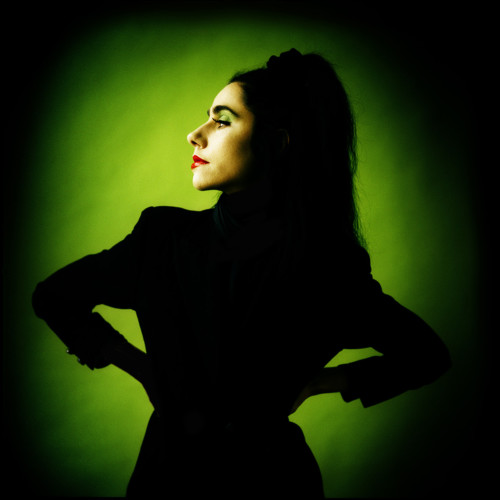 Select options This product has multiple variants. The options may be chosen on the product page / Details
Select options This product has multiple variants. The options may be chosen on the product page / DetailsHarry Borden: P J Harvey
£ 625 – £ 5,800PJ Harvey photographed in Harry Borden’s Bethnall Green flat, London 1996 Harry Borden recalls the shoot:" Polly Jean Harvey is an alternative rock icon. She has won the Mercury Prize twice, had eight nominations for the Brit Awards, six nominations for the Grammy Awards and was awarded an MBE in 2013 for services to music. I was commissioned to do a portrait shoot in 1996 with Polly by Option, an alternative music magazine of the time. I was a fan of her work, so it was an exciting opportunity. At the time she was popular in trendy circles, but wasn’t widely known yet. She was about as cool as you could imagine and I don’t think she’s ever lost that quality. Back then, I had a flat in London’s Bethnal Green and suggested we use it for the shoot. She turned up dressed completely in black, with green eyeshadow and red lipstick that accentuated her features. We spent a few hours taking the pictures. I chose the green background to match her eyeshadow and complement her lipstick, and set up the backdrop in the hallway. I used natural light from a window, and set it up so that most of the light fell on her face while illuminating only a small part of the backdrop. I shot this image on my Hasselblad CM with an 80mm lens. At that time, I liked a cross-processed look and this one was taken on Kodak Ektachrome Professional ISO 100 transparency film, and processed in C-41 (print film) chemicals. This produced a more contrasty image with little or no shadow detail. It was one of those occasions when cross-processing augmented the subject without being obvious. Afterwards, when a limo came to collect Polly and take her back to where she was staying in Baker Street, I asked if I could go with her. There, we found a little supermarket and I took some pictures of her as an anonymous customer. The whole shoot was great because of the combination of an incredibly photogenic subject with amazing clothes and make-up. It was one of those portrait sessions which, when you get the film back from the processing lab, you’re really delighted with. On a personal note, at the time of the shoot my wife and I were deciding on a name for our unborn child. I put the name Polly into the hat and my daughter was named after her." Available in a choice of physical size options. Please ask for framing options. Please allow 2-3 weeks between order and delivery for an unframed photograph. Framing adds 2-3 weeks. -
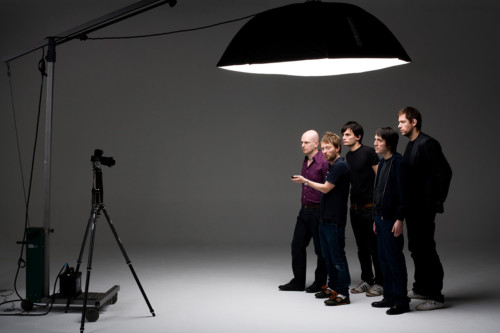 Select options This product has multiple variants. The options may be chosen on the product page / Details
Select options This product has multiple variants. The options may be chosen on the product page / DetailsHarry Borden: Radiohead (2007)
£ 625 – £ 5,800Radiohead photographed at Holborn Studios, London, 2007 In 2007 I photographed Radiohead for the Observer Music Monthly. They were about to release their seventh album, In Rainbows. They were also a more cerebral outfit than most other bands, so I thought carefully about how I would photograph them. I definitely didn’t want to turn up completely unarmed to photograph a band of hip and savvy people. The Observer had hired a room at Holborn Studios in north London, but I aimed to do something different from the average studio shoot. I wanted to approach it from an alternative angle, to include some element of performance and encourage the band members to be fully engaged and collaborative. With all that in mind, I came up with the concept of allowing the band to photograph themselves. I liked the idea because they seemed empowered and in control of their destiny, so it seemed an appropriate approach, as well as being quite funny. I talked it through with the magazine’s editor, who agreed, then bought an infrared cable release so the band could fire the camera’s shutter. When they arrived for the shoot, I explained the idea to them and they were really up for it, so I went ahead with setting it up. We had the biggest studio at Holborn. The equipment included a splendid block and tackle arrangement that I’d often admired, so I decided to incorporate it in the shoot. I attached one light to it with an Octa softbox, which I love using. I only used one light because when it comes to lighting I always believe that less is more. My Canon EOS 1Ds Mark II was set up on a tripod with a 50mm lens attached. I asked the band to stand under the Octa and arranged the band members with lead singer Thom Yorke at the front. Then I gave him the infrared cable release asked him to point it at the camera. I let him take the pictures until the memory card was full. One of those images was used on the cover of Observer Music Monthly. After we had done that scenario, I borrowed my assistant’s 1DS Mark II and asked the band to stand in the same places as they were when taking their own picture. Then I switched the radio sync to my assistant’s camera and shot the whole set-up from a different angle. I got some frames of my assistant standing by the camera, but ultimately the set-up worked best when it was just the band taking pictures. My favourite shot, shown here, has Thom Yorke giving a knowing look to my camera. This picture was used inside the magazine. As well as being something different and eye-catching, it works well because I think the picture references the kind of band Radiohead is. Available in a choice of physical size options. Please ask for framing options. Please allow 2-3 weeks between order and delivery for an unframed photograph. Framing adds 2-3 weeks. -
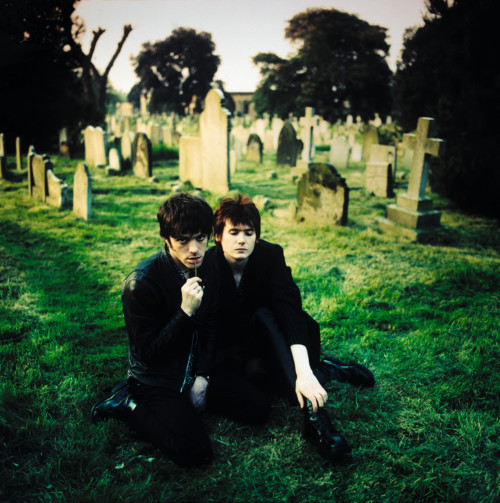 Select options This product has multiple variants. The options may be chosen on the product page / Details
Select options This product has multiple variants. The options may be chosen on the product page / DetailsHarry Borden: Richey Edwards and Nicky Wire
£ 625 – £ 5,800Richey Edwards and Nicky Wire of the Manic Street Preachers photographed at Brompton Cemetery, London on 30 April 1993 Harry Borden recalls the 1993 shoot at Brompton Cemetery in London. “My day with the Manic Street Preachers started with reportage black and white pictures of singer James Dean Bradfield with his cousin Sean Moore (drums) playing in a rehearsal room. The no-nonsense, engine of the band. Then later I went to Brompton Cemetery to photograph Richey and Nicky. Appearing louche, debauched and nihilistically glamorous, their contribution was a visual style that embodied the emotional alienation of the music. I arrived at the location early and explored the temples looking for good spots. Entering one of the substantial mausolea, I sensed I was not alone. There were men standing in the shadows. My heart beating, I held my heavy camera bag to my chest and walked quietly out and was relieved to see the boys waiting for me at the Fulham Road entrance. It was early evening and the unsettling encounter was forgotten, as I began to take their picture in the smoggy London light. I gave them no direction, they just sat among the gravestones. I remember thinking how easy it was to photograph Richey. He was so handsome. Less than two years later he was to disappear at the age of just twenty-seven. On the eve of a promotional trip to America, he vanished from his London hotel room, his car discovered near the Severn Bridge. Sometimes images are rendered poignant as time passes. Later I learnt the cemetery had a reputation for being a popular cruising ground for gay men so I needn’t have worried about being mugged for my cameras. Shot for Select Magazine with my Hasselblad on Kodak Vericolor colour negative film developed in E6 to produce a transparency.” Available in a choice of physical size options. Please ask for framing options. Please allow 2-3 weeks between order and delivery for an unframed photograph. Framing adds 2-3 weeks. -
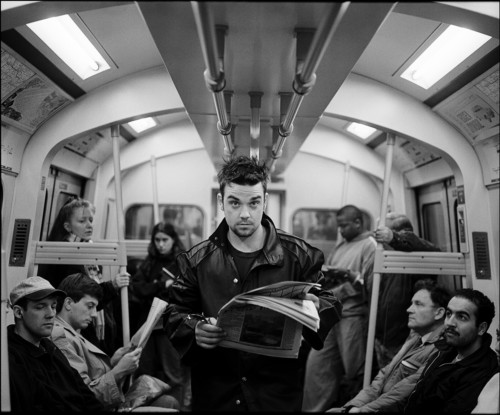 Select options This product has multiple variants. The options may be chosen on the product page / Details
Select options This product has multiple variants. The options may be chosen on the product page / DetailsHarry Borden: Robbie Williams, London (1997)
£ 625 – £ 5,800Robbie Williams photographed on the London Underground, March 1997 Harry recalls the shoot: “In early 1997, Robbie Williams was at a difficult stage in his career, and it wasn’t easy to predict what would happen next. Aged 23, he had left Take That the previous year but had yet to release his first solo album. When I was commissioned by music magazine Select to photograph him in March 1997, he seemed a little lost. The magazine had booked a studio in Clerkenwell, central London, and wanted me to shoot portraits to go with an interview by journalist Caitlin Moran. But Robbie wasn’t in the best frame of mind for the shoot. I remember clearly that I had little or no conversation with him. He wore an amazing striped suit, and I photographed him manically jumping around. It wasn’t an intimate type of shoot at all; it was just a bit crazy. His PR people were looking on and wringing their hands with anxiety. However, even in this unpredictable and dishevelled state, he was very charismatic and handsome. He had amazing eyes and was great to photograph. Aside from the studio portraits, I had other plans for the shoot. I’m a big fan of Dennis Stock’s famous photographs of actor James Dean in Times Square, and I wanted to try something similar. I liked the idea of photographing someone charismatic in an anonymous setting, so I suggested that we go outside. The people from Robbie’s management company were very concerned about him being mobbed, but I tried to persuade them that it was a good idea. I said we would just walk through Clerkenwell to Farringdon tube station, where I’d get some shots of him on the concourse, perhaps reading a newspaper. They reluctantly agreed, though I didn’t tell them my real plan – to photograph him on a London Underground train. As Robbie and I walked through the station with an entourage behind us, I told him what I was planning to do, and he agreed. So when a train pulled into the platform, he and I jumped on just as the doors were about to close. Everyone else, including his PR people and my assistant, was left on the platform. Robbie and I went one stop on the train to King’s Cross station. I had my Fujifilm GW670 (a 6x7 rangefinder camera with a 90mm lens), some Kodak Tri-X film and a tripod. I shot about 10 frames. Nobody on the train said anything to us or barely even looked up. We got out at King’s Cross and caught the train back to Farringdon. If I wanted to shoot something like that today, I’d probably have to get official permission or set it up with lots of extras. But we got away with it then because we did it so quickly. If you’re fleet-footed and completely brazen, quite often people don’t bat an eyelid. If you ask: ‘Is it okay to take the picture?’ you’re just giving people the opportunity to object. Here, we winged it and I think that energy and spontaneity is woven into the fabric of the picture. The best picture I’ve taken of him is the shot on the tube. It was selected for the 1997 John Kobal Photographic Portrait Award exhibition. It was exactly the picture I’d wanted. Even today, I can look at it and feel pleased that I managed to pull off my idea.” Available in a choice of physical size options. Please ask for framing options. Please allow 2-3 weeks between order and delivery for an unframed photograph. Framing adds 2-3 weeks. -
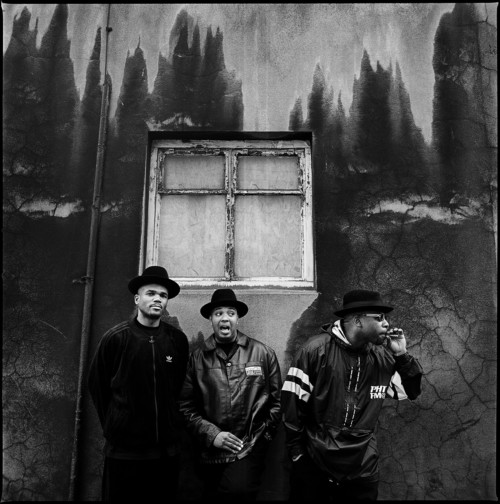 Select options This product has multiple variants. The options may be chosen on the product page / Details
Select options This product has multiple variants. The options may be chosen on the product page / DetailsHarry Borden: Run DMC
£ 625 – £ 5,800Run DMC photographed near their Edgware Road hotel, London on 18 May 1998 Harry Borden recalls the shoot: “ Often I find an environment I'd like to photograph anyway—like this wall by their Edgware Road hotel. I loved the flame-like markings. After placing my subject in the location, I see what happens. This was photographed on my Hasselblad with Kodak Tri-X. Sadly, Jam Master Jay (on the right) was shot and killed in 2002." Available in a choice of physical size options. Please ask for framing options. Please allow 2-3 weeks between order and delivery for an unframed photograph. Framing adds 2-3 weeks. -
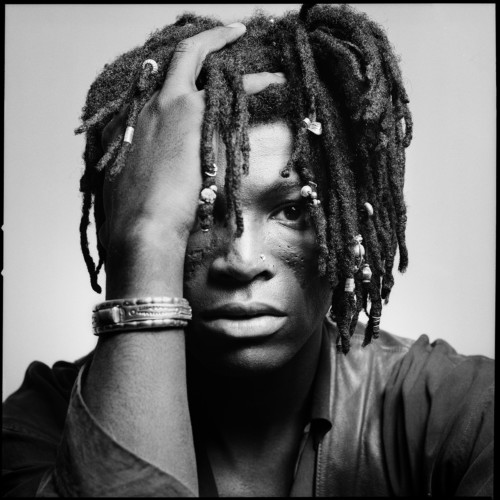 Select options This product has multiple variants. The options may be chosen on the product page / Details
Select options This product has multiple variants. The options may be chosen on the product page / DetailsHarry Borden: Seal
£ 625 – £ 5,800Seal photographed on 23 April 1991 at his record label offices in London. Harry Borden recalls the shoot in London on 23 April 1991:“I took this photograph for the NME at his record label offices in Kensington Church Street. Such was my naivety at the time, when Warner Bros got in touch to ask about using a picture for press and publicity, I was flattered and agreed to a fee of £75. He went on to sell more than 20 million albums worldwide. I shot this on Agfa APX 100 with my Hasselblad." Available in a choice of physical size options. Please ask for framing options. Please allow 2-3 weeks between order and delivery for an unframed photograph. Framing adds 2-3 weeks. -
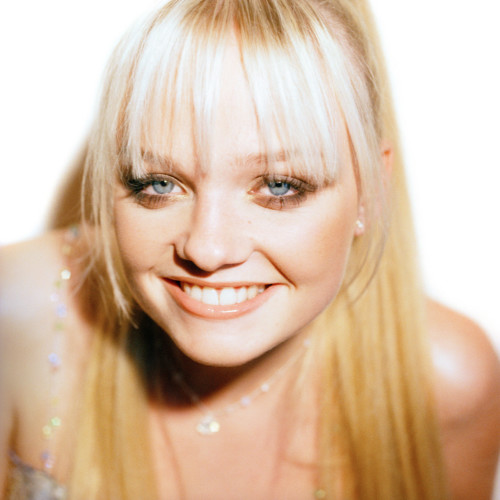 Select options This product has multiple variants. The options may be chosen on the product page / Details
Select options This product has multiple variants. The options may be chosen on the product page / DetailsHarry Borden: Set of five individual Spice Girls portraits
£ 625 – £ 5,000The Spice Girls photographed in Las Vegas on 8 December 1997. A set of five individual portraits. Harry Borden recalls the shoot on 8 December 1997 in Las Vegas: “The ageing diary pages from my Filofax confirm it was my craziest week ever. Monday, I shot the Girls in Las Vegas. Tuesday, I flew to Los Angeles for artist Frank Stella. On Wednesday, I travelled to the East coast to shoot Joseph Heller in New York and finally a jaunt to Chicago for Barry Manilow. All without an assistant. These portraits were taken in my hotel room, lit with a single tungsten ‘redhead’. I realise now I was influenced by Corinne Day’s grungy portrait of Kate Moss for Vogue June 1993. By this stage the Girl Power Juggernaut was unstoppable, the previous evening I’d watched them win a Billboard Award for best album at the Hard Rock Hotel and Casino. As usual, I didn’t get long but they were fun and very professional." Available in a choice of physical size options. Please ask for framing options. Please allow 2-3 weeks between order and delivery for an unframed photograph. Framing adds 2-3 weeks. -
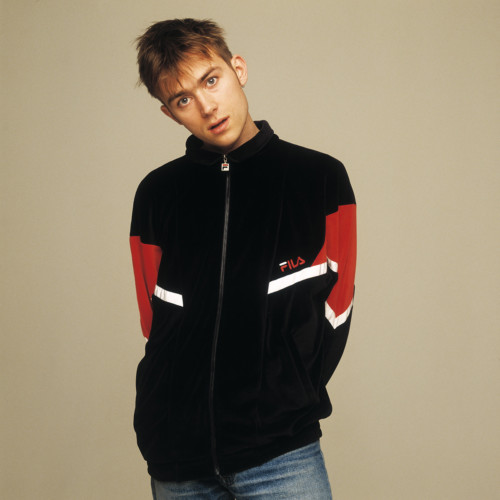 Select options This product has multiple variants. The options may be chosen on the product page / Details
Select options This product has multiple variants. The options may be chosen on the product page / DetailsHarry Borden: Set of four individual Blur portraits
£ 625 – £ 5,000Blur photographed in a studio off the Kings Road Chelsea on 10 March 1994. A set of four individual portraits. Available in a choice of physical size options. Please ask for framing options. Please allow 2-3 weeks between order and delivery for an unframed photograph. Framing adds 2-3 weeks.
